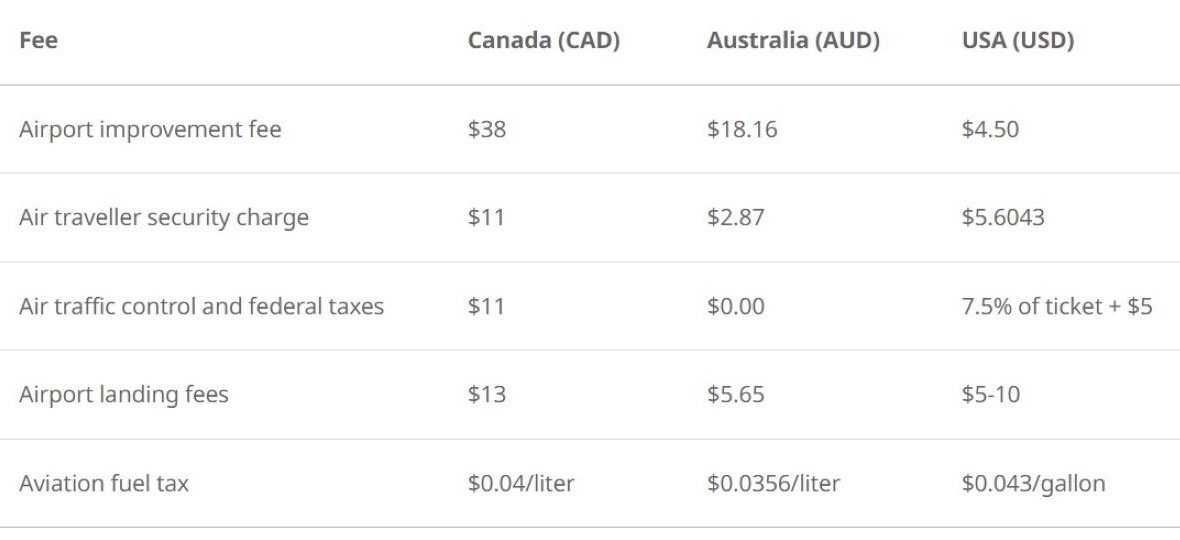WestJet says rising government-imposed fees are what’s keeping air travel “out of reach” for many Canadians. Along with third-party fees, the add-ons are “higher in Canada than in other countries (and) represent the most significant barrier to competitive growth and affordable air travel,” the company states in a statement on its website.
And it adds, “You are not the only one scratching your head at why domestic flights in Canada feel bogged down” by the fees, which it notes are outpacing inflation.
WestJet explains that Canadian travellers are required to pay five distinct government fees in Canada, leaving travellers with no recourse but to pay a minimum of $75 on every flight before airlines even add the fare.
(Third-party fees are comprised of direct and indirect fees that are passed on to guests from airport partners and federal regulators. Direct fees imposed on passengers include airport improvement fees (AIFs) and air travellers security charges (ATSC). Fees imposed on airlines that are passed through to travellers include NAV Canada/air traffic control fees, aviation fuel taxes and federal government ground rents, which are passed through in higher airport landing fees and terminal charges.)
“Not only does this strain traveller’s budgets, while they already are facing an affordability crisis, but it stifles low-cost competition within the industry,” says WestJet, adding, “Have you ever noticed that you don’t have to swipe your credit card to pay Canadian Border Service fees at land crossings, but you do when you pay for your plane ticket?
“In stark contrast, Australia and the United States third-party fees are less than half the price of Canada and seemingly unbelievable low fares,” continues the airline, adding that “also explains why we don’t see many low-cost American-based airlines flying in Canada – entering our market is simply too expensive.”
A closer look at fees
Here’s a comparison of the average government-imposed fees charged on domestic flights in Canada, Australia and the US:

Moreover, despite these costs, WestJet says that between 1995 and 2024, direct third-party fees increased by 65.2% (and from 9.5 to 25.3% of total airfare). Airfares decreased by 49.1%.
The solution
WestJet says that reducing these fees by just 50% could stimulate demand for an additional 12 million one-way domestic flights each year – a boost in demand that would be enough to support and sustain another Canadian airline comparable to the size of WestJet.
“With the right adjustments,” says WestJet, “the skies could become more affordable for millions, fostering greater connectivity and economic opportunity across the country.”
If you enjoyed or found this story useful, we’d appreciate if you would forward it to a colleague or friend who may also enjoy it. If, on the other hand, a friend shared it with you, welcome! You can get all the latest travel news and reviews from Travel Industry by simply clicking HERE.

